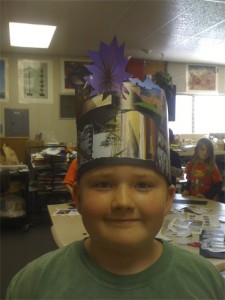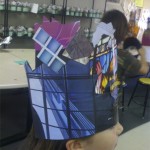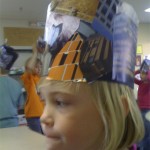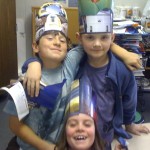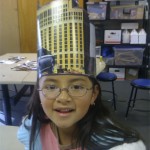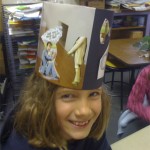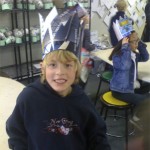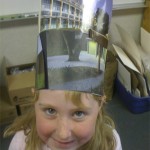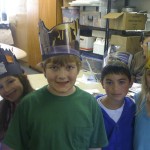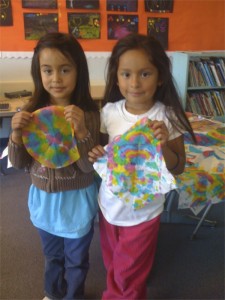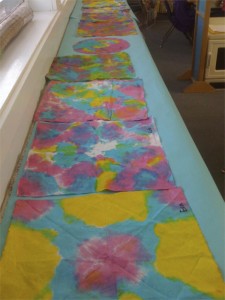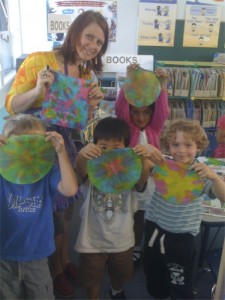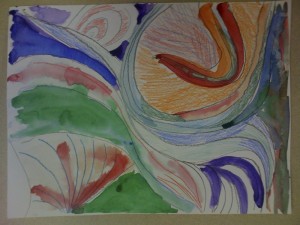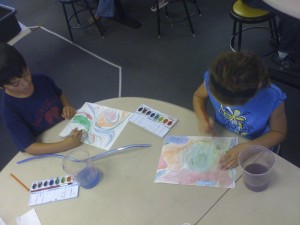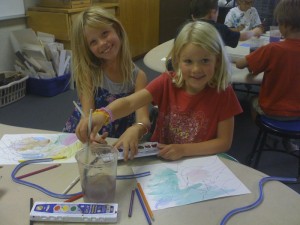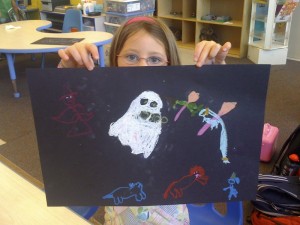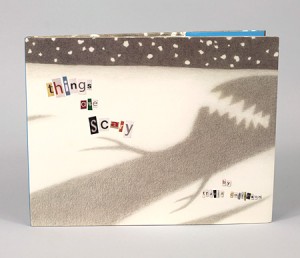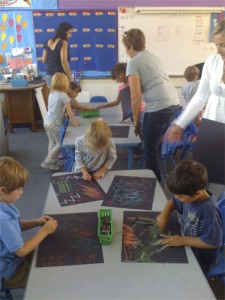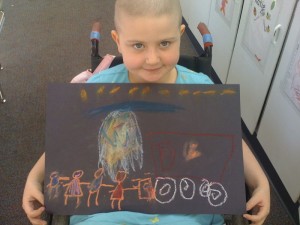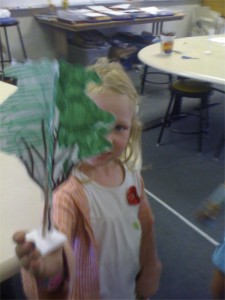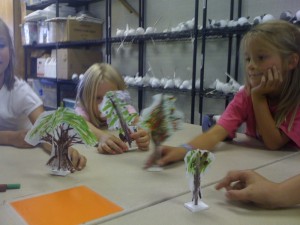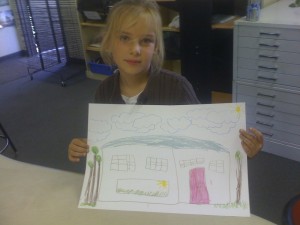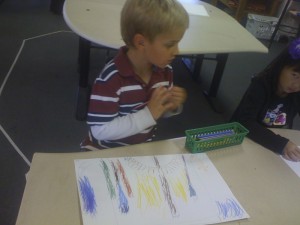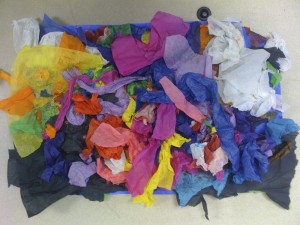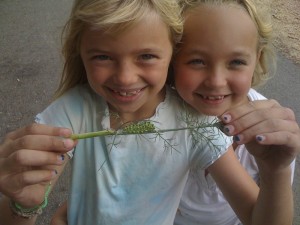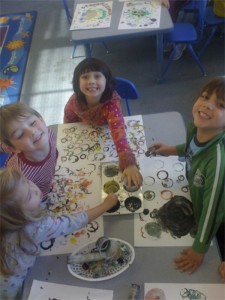Kindergarten classes at Neil Cummins learned primary and secondary color mixing with liquid watercolor on shapes.
First grade explores observational landscape painting with watercolor at the pond. Students exercise plein air painting techniques.
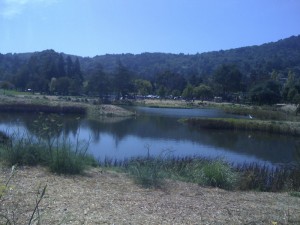
The first graders chose a range between the micro and macro in nature, drawing from the bugs in the dirt to the clouds in the shy hanging over the majestic Mount Tamalpais.
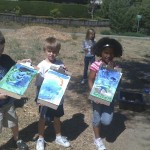
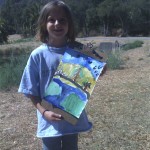
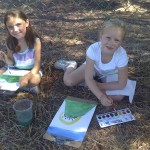
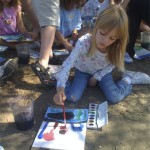
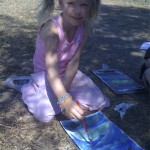
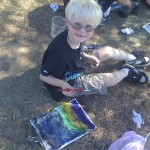
Mrs. Marcus first grade class using watercolors at the pond.
Second grade- Imaginary contour land maps
Kindergarten classes used oil pastel on black paper to create fall drawings about scary things!
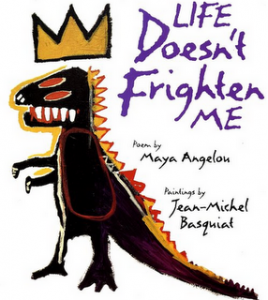
Read one book before and one after the lesson. Poetry by Maya Angelou accompanied by Basquiat paintings, and an original story and illustrations by San Francisco based artist and friend Travis Collinson.
The first grade spent several weeks on a Community Project; and made 3-d trees.
Students learn techniques of how to create a 3-d tree out of a 2-d drawing.
The following week the first graders continued to work on the community Project and made 2-D building studies from a guided walk around campus where they took mental pictures of the shapes, architectural details, and plant life that they observed
Beginning by closing their eyes and envisioning their own house, then a house they visit often, the students then discussed the differences in shape, color, size, setting, etc.. We then took a walk around campus and students were instructed to take mental photos of the buildings, focusing on shapes and lines.
Students focused on elements and details of the buildings that they had not noticed before.
Second grade underwater sea life collages.
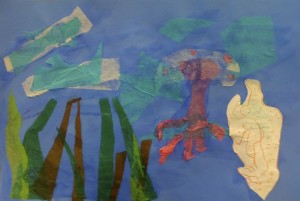
After discussing what some of the strangest things about sea life are, I show them a book of photos that focuses on unusual colored/patterned sea creatures and plants. Students (painterly) collage with colored tissue paper and drawings that they make from shells, coral, starfish, etc. that I brought in.
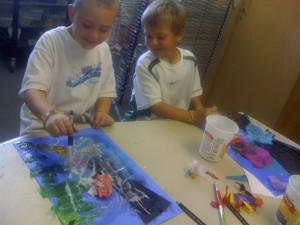
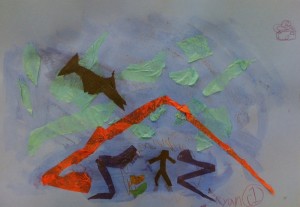
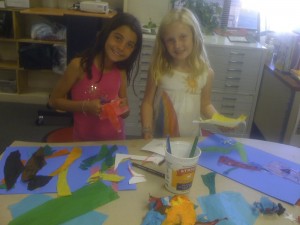
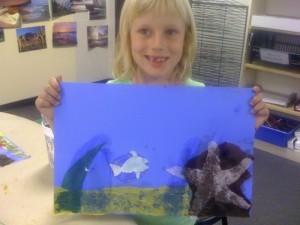
Second grade Nature study rubbings transformed to imaginary stories in an accordion book format.
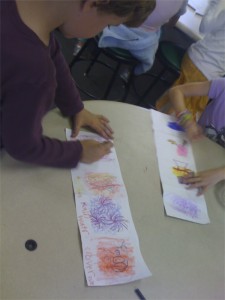
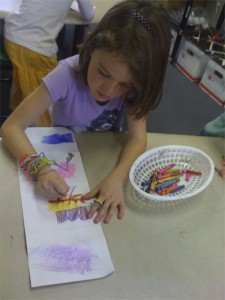
Students folded a long piece of paper into an accordion book, then learned crayon rubbing techniques, then went outside to do several different texture rubbings, and when they came back in they observed the patterned textures. They then were instructed to think about what each impression made them think of and draw into the rubbings to create something new.
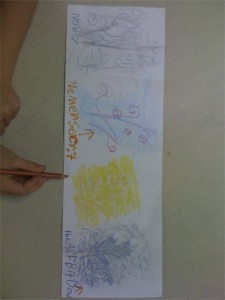
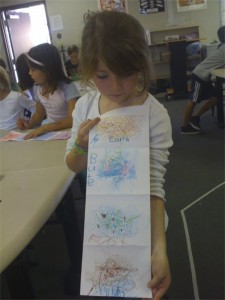
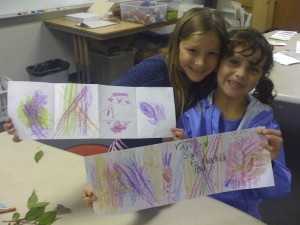
The Kindergarten classes did ” The dot print”– Printing with paint, using various forms of circles to make an image only using dots. I first read the book “the Dot”, by Peter Reynolds, then we talked about “print” as a way of making multiples.
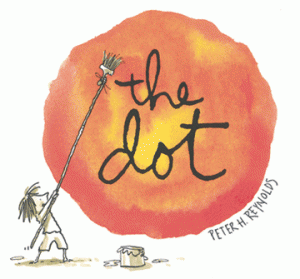
Explored multiples, creative mark-making, and color mixing.
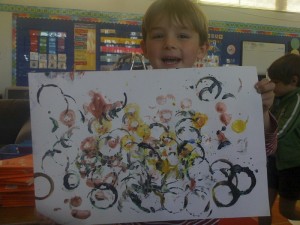
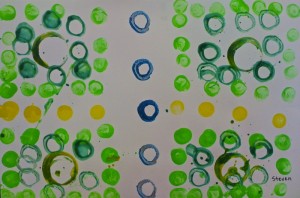
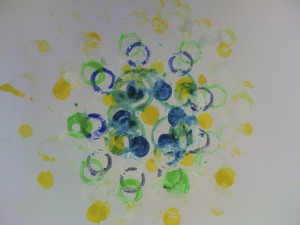
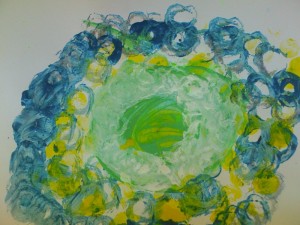
First grade made a Still-life of fruit- Each table had a still-life made up of artificial fruit and one real piece that was placed on a colorful striped patterned knit mat. The students used oil pastel on paper. We looked at Paul Cezanne, talked about texture, and how each fruit has more colors than just the prominent color, encouraging them to mix, layer and blend colors. Students also drew the patterned mat and some background information to ground the fruit.
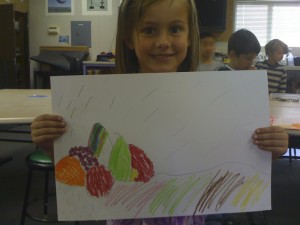
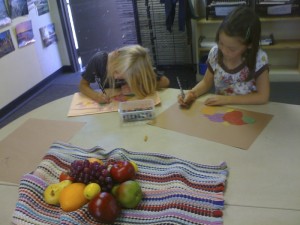
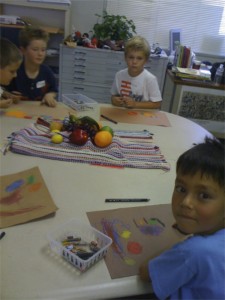
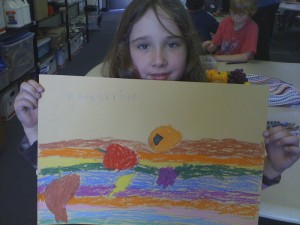
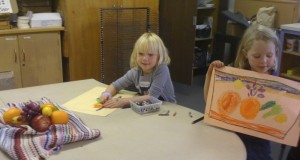
2: Architectural Tin Prints- We used images from architectural magazines, talked about interior versus exterior spaces, then students chose images to work from, adn were given creative allowance to invent, add and expand upon the original image to create dynamic embossed tin plates.
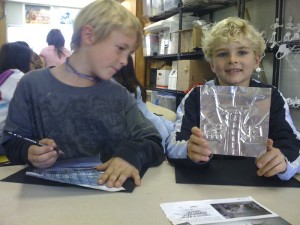
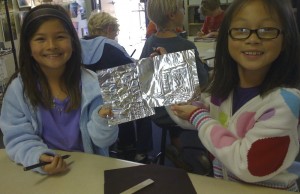
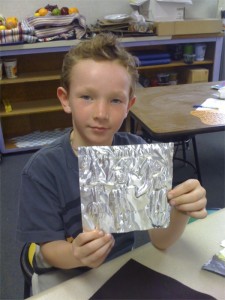
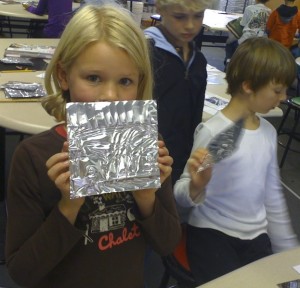
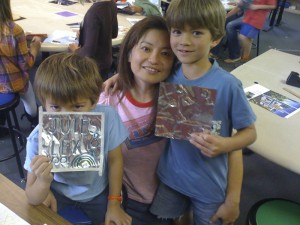
K: Art Gallery Collage/text- Using a variety of art show cards, the students cut into the cards to create their own art. We discussed layering/overlapping and cutting/ripping and glue stick techniques. Lastly, students used letter stamps and stickers to create silly titles for their works of art.
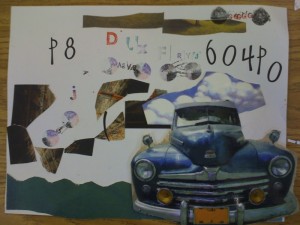
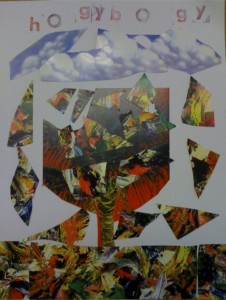
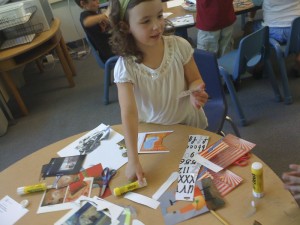
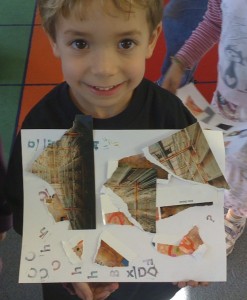
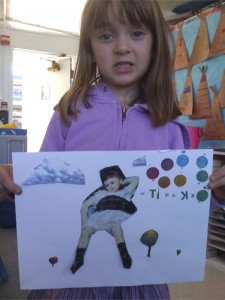
1: Sound Collage- Using colored tissue paper and music tab, students created collages in response to music I played. We focused on pattern/rhythm, color/mood, composition, and technique.
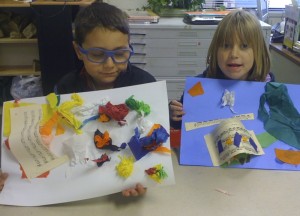
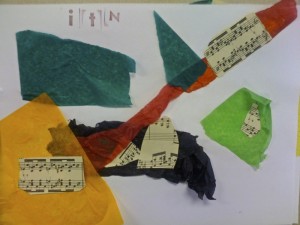
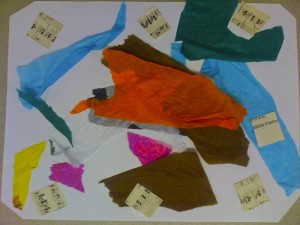
2: Tibetan Prayer/Wish flags- I showed them a string of 5 flags from Nepal, and we talked about the purpose and symbolism of the flags. Then students drew pictures and text of a wish for the world in one of 5 categories, associated with the color symbol/elements of a traditional Tibetan prayer flag (water, air, wind, fire, earth). The next step was to trace their drawing on to silk with paint markers, and then I dyed them.
need pics
K: Festive Ornament- Students used metallic tissue paper, glitter glue, and holographic rings on top of a clear plastic pocket rectangle/clip. The result was translucent little pieces of modern art that could be hung in a window, on the tree, etc..
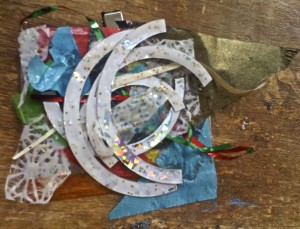
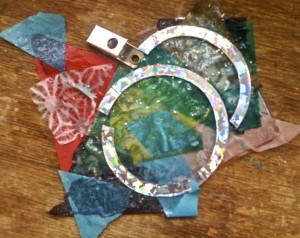
1: Self Portrait Present- Students first did practice drawings of themselves on plain white paper while looking in the mirror. They then drew themselves, (using a dark/soft graphite) again on a thick, deckled edge watercolor paper, and used metallic and glitter watercolor paint to create expressive renditions of themselves to give to their parents or someone else special to them.
2: Festive Cards with 3-D elements- Students made simple abstract cards using metallic tissue paper, glitter glue, metallic tinsel, music notes, and holographic rings. I showed them techniques they could use to make certain elements 3-D, by bending and curling. Some students also worked on finishing their prayer flag.
K: Glazing of the pinch pots- Students used three colors and learned to layer glaze, but not mix, and trying to keep it off the bottom. They also did decorative details on top of their two coats of base glaze.
1: Papermache Globes- Using newspaper and paste on balloons, students did 1 to 2 layers around the balloon. We talked about what a globe was and briefly mentioned continents and oceans, which will be discussed further in the future.
2: Suminagashi Marbling- Students tried two different techniques of marbling working in partners and also alone. Using brushes and toothpicks to put small dots of ink and a dispersant on water, that is then captured on paper. Students also drew back into some of the prints using sumi ink and toothpicks.
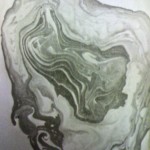
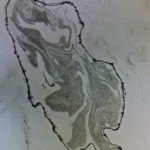

K: Self-Portrait-ish mask- We read the book ISH by Peter Reynolds, and then discussed making things that look “ish”.
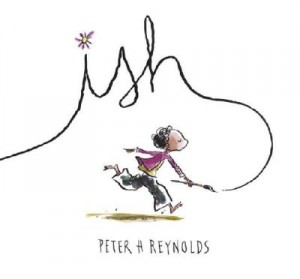
They then drew themselves with crayon and painted with metallic/glitter watercolor paint. We used paper plates, yarn, and I cut each kids eyes according to how they drew them.
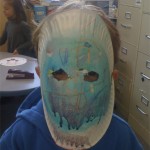
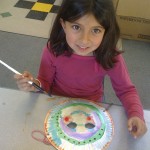
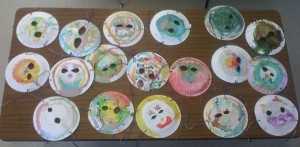
1: Continued globes, last layers of papermache
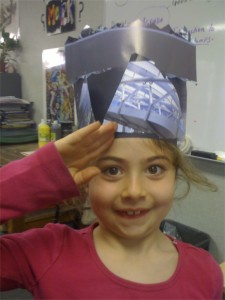
2:Architectural Crowns- Using a black paper base, students creatively cut into building images and collaged them into a crown. We revisited interior/exterior and also talked about how to transform design elements into medallions for a crown. Each crown was then individually fit to the students head to make a really cool piece of wearable art.
